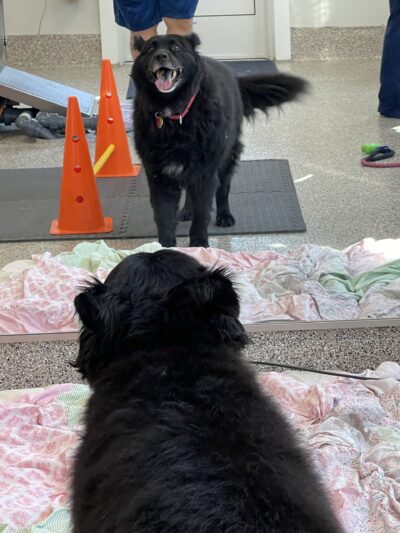Back to school time can be stressful for families and dogs. Schedules change, priorities change, and spare time can be hard to come by. Your dog will likely start spending more time alone than he/she has been used to for the last year and half – or ever. Pepper’s Paws Dog Training has some tips to help you and dog adjust to the new normal this school year.
Keep it simple
Start a routine that you stick to most days of the week. Try to keep wake up and bed times around the same time each day. Same thing for walk/potty breaks. Consistency is important for building confidence in your dog. When your dog knows what to expect when, anxiety usually goes down. A few walks each day and a few minutes of dedicated training time each day is our recommendation. Committing to this level of enrichment can create a meaningful behavior change in most dogs. Don’t overdue it by trying too many new things all at once.
Be mindful of not making starting new things – exercise, training, dog sports, etc. that you cannot continue. The last thing you want to do is fill your dog’s time with you and suddenly stop what you have started because you realize you don’t have as much time to dedicate to your dog as you thought.
Crate training is key
All dogs should be able to be comfortably crated. A crate is a safety device. Crates keep dogs from getting into trouble when owners are not home. Sleeping around the house all day can be boring for dogs. Bored dogs getting into the trash, destroy dog beds, and chew on things they should not chew on. Unless your dog is an adult dog who has proven to be trustable when left alone, plan to crate your dog.
Crate training can take time – the time to start is long before you need to leave your dog alone. If you need help with crate training, here is a short video to show you how to get started. If you find that your dog is struggling to get used to being crated, we can help you in private in person lessons if you live in the Rehoboth/Lewes, DE area or via Zoom if you live outside of our in person private lessons service area.
Physical exercise
Most dogs benefit from leash walks. Dogs who are very reactive or fearful may not be able to relax enough on a walk in their current state. Working with a positive reinforcement dog training can help these dogs. For dogs who enjoy leash walks, hit the road with them! 20 minutes to an hour – depending on your dog’s age, health, and weather conditions – can be a great way to ensure your dog is ready for a nap when you leave for work or school.
Mental enrichment
Every dog breed was originally bred for a purpose. Tapping into your dog’s natural breed needs can be a great way to mental meeting their needs for enrichment – think of it as giving your dog a job. Hounds love to sniff. Retrievers like to fetch or retrieve things. Many dog breeds just like to do training or work for their food. Not sure of what your rescue dog’s breed is? Experiment with different things like sniff walks, playing fetch, basic obedience training, snuffle mats, or puzzle toys to see what your dog enjoys.
Head trainer Deb Murray, is Certified Canine Behavior Consultant (CBCC-KA) and Certified Professional Dog Training (CPDT-KA) by the Certification Council of Professional Dog Trainers, a Fear Free Certified Trainer, and an AKC Evaluator.
